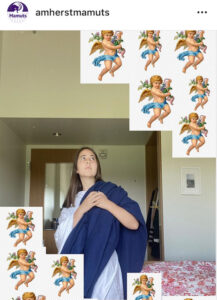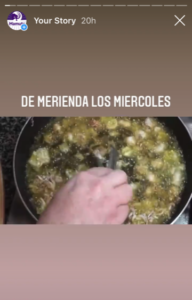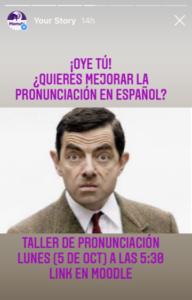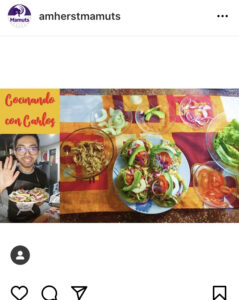Reimagining Extracurricular Activities during a Pandemic
By Carmen Granda, Amherst College

The pandemic has created many challenges in and outside of our classrooms. Although much professional development for instructors in the last months has been focused on how to design engaging virtual classes for our students learning remotely, little has been discussed about building community on college campuses. At a small liberal arts college like Amherst, community is fundamental. During the semester, students and faculty have many opportunities to get to know each other outside of the classroom. Whether it is an athletic event, a class dinner, or a quick hello in the dining hall, faculty and students are constantly connected. With the pandemic pushing students and faculty into confined spaces, creating a sense of community is necessary more than ever, even if it is via a screen. Fortunately, many of today’s college students are considered “digital natives,” a term used to describe those who were brought up with technology and are deemed “fluent” in its language and use. For many of these students, communication via social media apps like Snapchat and Instagram, and through FaceTime, is second nature. With this idea in mind, the Amherst College Spanish department implemented several changes to the extracurricular program this year in order to build community while exposing students to Spanish and the diverse culture of the Spanish-speaking world in an engaging way–and all from a safe distance.
With many colleges and universities choosing to teach remotely and limiting the number of students on campus, using social media has become a popular strategy to connect the community. Although many social media apps and sites exist, those that rely primarily on visuals, like Instagram, Snapchat, and recently, TikTok, are the most popular among today’s college students. Accordingly, the first significant change for the Amherst College Spanish department was the creation of an Instagram account: amherstmamuts. This account, administered by three Fulbright Foreign Language Teaching Assistants (FLTAs) and several faculty members, is a space to share daily announcements and events, display student classwork, and showcase majors and alumni who studied abroad in a Spanish-speaking country and have used the language in a job or volunteer opportunity.
|
|
|
|---|---|
|
|
|
In addition to posts, Instagram’s “story” function permits users to share short videos and images that disappear after twenty-four hours. Almost every day of the week these stories have a theme. For example, on Mondays, a daily word is posted and the stories that follow the rest of the day are often linked to the new word. For instance, the word of the day, otoño, or autumn, can lead to several posts with pictures (and words) associated with the season: leaves, pumpkins, Halloween, to frighten, Day of the Dead, etc. “Merienda miércoles,” or “Wednesday Snacks,” are dedicated to showcasing images of different Hispanic dishes and often end with a poll for students to select their favorite food.
|
|
|
|---|
On Thursday, or “Jajaja jueves,” students read jokes, riddles, and popular comics, like Mafalda. The rest of the days, the “story” function is used to advertise events, connect with students via the Live function, interact with students via polls and quizzes, and to share favorite songs of different genres in Spanish. These stories and posts increase students’ awareness of the rich cultures of Spanish-speaking countries and expose them to more authentic language.
|
|
|
|---|---|
|
|
|
Despite the fact that the FLTAs are in their home countries due to the pandemic, they have connected with students in creative ways. Through the “stories” function on Instagram, they share some of their daily activities with students, immersing them in the language and culture. For example, the FLTA from Mexico created a video sharing his visit to the local zoo and some of the animals that he saw, and the FLTA from Uruguay, who lives close to the border of Brazil, shared how easy it is to cross over to a new country by car. These brief videos offer students a glimpse into a new culture, thereby allowing them to make cultural observations between their own and that of the FLTAs. Moreover, these videos help the students and FLTAs create personal connections despite the distance.
In addition to using Instagram to build community, the department has organized weekly gatherings to promote the Hispanic culture and language. These events are not new to the department. Pre-COVID-19, the FLTAs hosted weekly tertulias, informal gatherings in Spanish in the dormitory on campus where students are expected to speak the language. Besides tertulias, every Friday, faculty, FLTAs, students, and any members of the community who speak Spanish met in the dining hall for lunch. In both of these events, students practiced their Spanish in an informal setting and got to know the department on a more personal level. Because many of the conversations in the Spanish table typically revolve around plans for the weekend and it is tricky to hold a conversation over Zoom while eating, the department replaced weekly lunches this year with other types of activities and focused on organizing engaging weekly events online.
The objective of the FLTAs’ weekly meetings is to share more about their culture and countries (Mexico, Uruguay, and Spain) and provide a space where students can practice their Spanish outside of the classroom. Students can choose from various topics, including politics, history, music, tourist destinations, and the education system, to name a few. As students are required to attend five of these events during the semester, the wide range of topics allows them to select the sessions that are most appealing to them. Additionally, by giving them various options to choose from during the semester, students are given agency, resulting in a high level of engagement in these weekly meetings. These sessions also push students outside of their comfort zone, as many are using their Spanish for the first time in conversations that go beyond the traditional textbook vocabulary or weekend plan discussions that would frequently occur in person during Spanish lunches in the dining hall. In these low-stakes discussions, students use their Spanish to discuss Spain’s monarchy, compare and contrast different popular songs, and express their opinions about the education system in Latin America. These sessions often coincide with the textbook themes or cultural topics of the language courses, allowing students to recycle old vocabulary. In general, these low-stakes moments, in which students practice grammatical structures, develop their vocabulary, and discuss topics that first and foremost interest them, become a pivotal step towards acquiring the language and reaching a more advanced proficiency.
In addition to weekly meetings, the FLTAs have also organized several cooking workshops this semester. Each FLTA uploads a video on YouTube cooking a popular dish from his or her country: Spanish tortilla, Mexican panuchos and salbutes, and fried tortas, a popular Uruguayan dish served with mate. After sharing the video and recipe via Moodle, Amherst College’s learning management system, students are encouraged to watch it, follow the recipe, and prepare the dish (if at home). For students who are on campus and do not have access to a kitchen, they are encouraged to post other recipes that they have prepared in the past or make comparisons with other recipes that may be similar to the dish. For example, in the case of the Spanish tortilla, students could upload a picture of a quiche and compare/contrast the two dishes. Then, there is a follow-up Zoom session where students can share further thoughts and ask questions to the FLTA or learn more about typical dishes from the country. In these special workshops, ACTFL’s three modes of communication are implemented: interpretive, interpersonal, and presentational. Students read the recipe, discuss it in the forum or in the synchronous session with the FLTA and classmates, and then, either write their own recipe and share in a discussion board or share it orally during the live meetings. All of these sessions are in Spanish, but students at all levels are encouraged to attend, even those at the beginner level. If there are several beginner students present in a Zoom session, breakout rooms can be used for a more effective conversation.
|
|
|
|
|---|
Besides these weekly gatherings organized by FLTAs, lecturers in the Spanish department have organized clubs aimed at specific levels and workshops open to all levels. For example, one club aimed at the intermediate and advanced students involves students listening to a podcast episode from Podium Podcast and discussing it over Zoom. The instructor for the podcast club also provides students with a brief summary of the podcast and a list of key vocabulary words and expressions to guide the listening activity and enhance discussion. Another club whose main focus is conversation is geared towards beginner students and covers a range of topics, including art, music, and food. Finally, two workshops have been organized for the Fall semester for students to improve their pronunciation skills. These sessions are primarily focused on listening and speaking, so students who want more practice in these specific areas can sign up for these events.
In terms of logistics, all information, including a link to the Instagram account, is posted on a shared page on Moodle that is accessible to the entire Amherst College community. On the shared Moodle page, students can access a Google Doc with a list of events in the Fall semester, along with a corresponding Zoom link. In the Moodle page itself, faculty and FLTAs also post brief descriptions of each event, images, and the Zoom link for those who may want more detailed information. Finally, the information is also shared as a post or a story through our Instagram account. Students follow the department’s Instagram account, but the department does not follow the students’ accounts for privacy reasons.
Remote learning has brought many new challenges to our classroom; nevertheless, using technology like social media and synchronous online tools like Zoom can be an effective way to pique students’ interest. In general, students are eager to see the technology because it forms part of their culture. To a certain degree, this sense of familiarity is reassuring during a pandemic. When used effectively, these online tools can help build community and immerse students further in the language and culture, thereby increasing their linguistic and cultural proficiency.















This article provides innovative illustrations on how we in the academe can adjust to the new normal, in many aspects of our (students’, faculty members’, administrators’) academic life. Thank you or these examples and suggestions.
Those are great ideas! Thanks for sharing. I teach two sections at a community college these days – Civics and Advanced Reading. If ok, I’d like to borrow some of these ideas for spring semester. Tito Craige ‘70